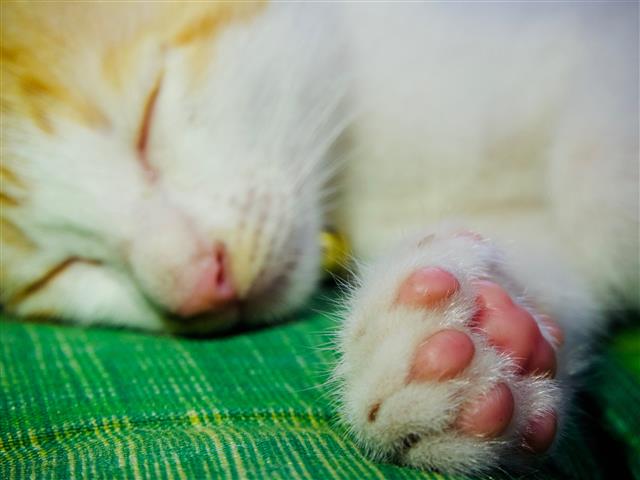Cat’s Pads and Paws
 February 22, 2018
February 22, 2018
Concerned about the health of your cat’s pads and paws? Pets Training & Boarding takes a look at how to keep your kitties paws in purrfect health.
Keeping your cat’s paws in tip-top shape is important. Remembering that they rely on these marvellous creations for most of their fun exploring. Sore and damaged pads are also prone to infection, especially when you consider how often your cat uses the litter tray to hide some unsavoury things.
From kittenhood it is advised you check your cat’s paws regularly for any cuts or painful areas. If you are concerned about any areas seeking veterinary treatment is important to prevent infection or further problems.
A great way to examine your cat’s pads is do get your kitten used to a spot of reflexology. When done correctly your cat will simply love the extra attention giving you time to examine the pads for any problems.
Diet and nutrition are also important. If your cat is missing a needed nutrient it may show in cracked or sore pads. Ensuring you feed your cat a balanced and full nutrient diet is recommended for full body health. Sore pads can also be a sign of an allergic reaction.
Outdoor cats can also damage their paws from exploring the world around them or by coming into contact with sharp objects such as glass.
There are many great books on the market that can help teach you the correct method in relaxing your cat by using massage. Reflexology is a mixture of acupressure and massage that is said to have an effect on the organs and glands of your pet. This technique can be used on the feet, outer ears and face.
Problems:
- Cuts or abrasions
- Peeling pads
- Swelling of the pad
- Sore painful nails
- Limping or reluctance to use the pad
- Continually chewing or biting at feet
- Swollen or cracked pad
- Odour coming from the pad
- Red or rough pads
If you are concerned seek veterinary treatment.
Nails Nails Nails
Many cat owners like to trim their cat’s nails to prevent clawing problems on couches and the like. Giving the tip a wee trim once a month is good practise, however you will need to get your young cat used to this. An older cat may not tolerate any pad and paw touching at all (cue the hiss and look of disgust).
Tips for clipping nails;
• Get your cat comfortable
• Gently push the nail out of the pad
• Quickly clip the sharp tip off the nail
It’s also a good idea to invest in a cat scratcher for indoor cats. If your cat loves climbing this and extending their full bodyweight to the nail’s it’s best not to clip your cat’s nails so they can continue to enjoy this playful experience. With a cat scratcher most cats will self-maintain the sharpness of their claws, meaning you will not need to clip the sharp end off.
Expert Tips: Dr Kim Kendall, from the Cat Palace in Sydney“A cat’s pads and paws are pretty well self-maintaining, if they are indoor cat they need their front nails trimmed once a month and the back nails trimmed only half as often.
“But if owners put in a scratching post when the cat can climb up so it’s body weight hangs on its nails they don’t need to trim the nails as the tip of the nail will be kept short.
“With the paws, some people do reflexology on the cat’s paws and if you do it the right way the cat will enjoy it, but not so much if you don’t. I do see cats who become allergic to dust or pollen and stuff outside, and concrete dust and then they can get peeling pads.”
